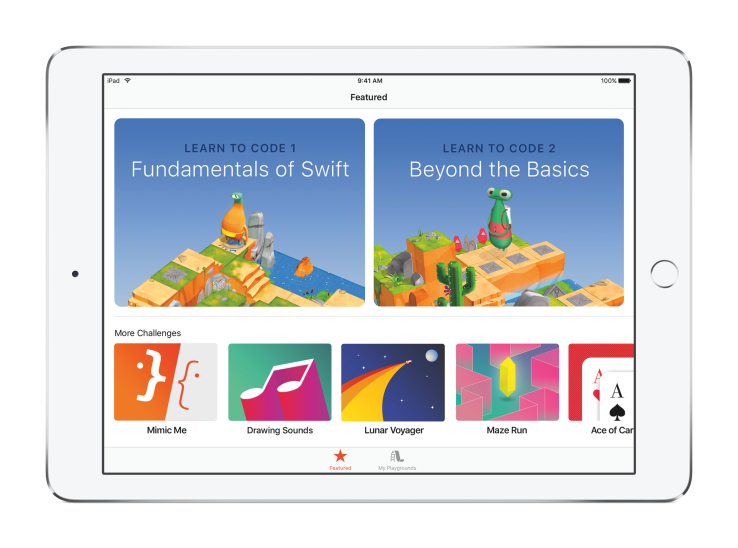

Along with the reveal of a new 9.7-inch iPad and new red iPhone, Apple also announced today that its learn-to-code app Swift Playgrounds is now available in five new languages. The additional languages include Simplified Chinese, Japanese, French, German and Latin American Spanish. The app, which has been downloaded more than a million times, offers a combination of programming lessons, puzzles and challenges designed to teach core coding concepts, plus templates that let students create real programs.
Swift Playgrounds was first announced at WWDC 2016, where the company explained how it wanted to inspire the next generation of coders through its software. Of course, getting more kids to code isn’t just an altruistic effort on Apple’s part — the company is dependent on programmers to build its software and to fill its app stores with consumer applications, where Apple gets a cut of the revenue.
What was interesting about Apple’s entry into the learn-to-code space is that it launched the app for the iPad, not desktop PC. The iPad, after all, is the Apple device that many kids already have in the home, and is a platform they’re familiar with from the many hours spent playing games.
Swift Playgrounds tries to make learning to code more fun, with its two-panel design featuring code on the left and the results of that code on the right — often a game that looks a lot like those kids have played for years.
In addition, by opting for the iPad for its app, Apple can focus on its entry points into schools — something it noted in today’s announcement of Swift Playgrounds’ expansion. The company said that the updated app is the “perfect companion” to the new, entry-level 9.7- inch iPad, starting at $329, also announced this morning. The idea here is to make iPads more affordable, in order to get them into more customers’ hands — including educational institutions, where they can become a part of the curriculum.
The added Swift Playgrounds languages were chosen strategically where Apple wants to grow a developer base well-versed in Swift, particularly China, which now leads the U.S. in iOS App Store revenue.
“Hundreds of thousands of iPhone and iPad apps, including some of the most popular in the App Store, use Swift — a programming language we designed to be both powerful and easy for anyone to learn,” said Apple CEO Tim Cook in a statement.
The updated app with the new languages will be available as a free download in the App Store starting today, and works on iPad models running iOS 10 or higher.

